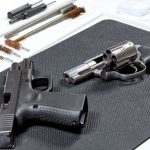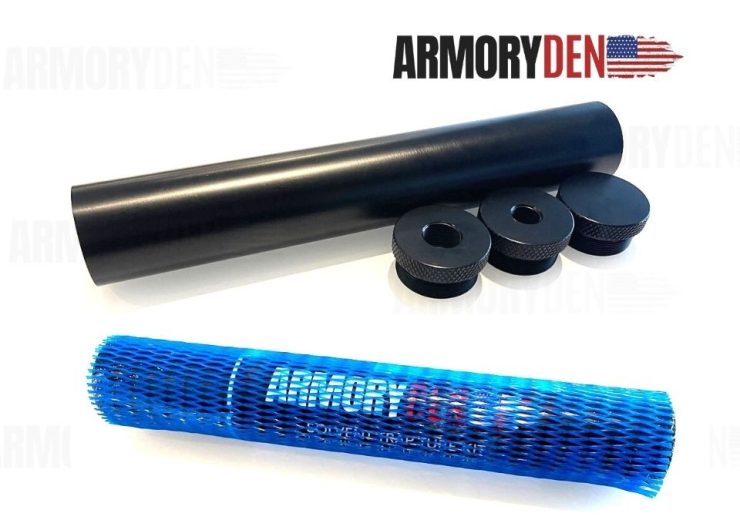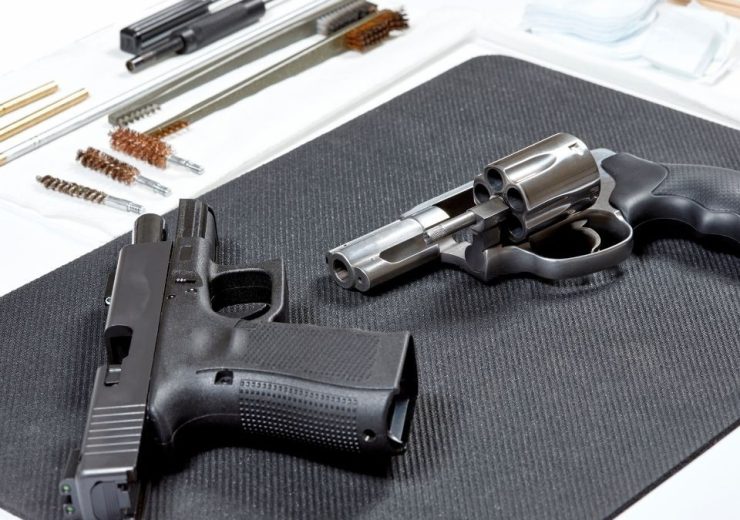Health Safety Guide for Cleaning Firearms at Home
Thousands of people worldwide suffer firearm injuries due to accidents. According to a report by Injury Epidemiology, 10 – 14 percent of these incidents occurred while the victim was cleaning their firearms. Cases like these arise every year, but they are totally avoidable. The main reason why people get hurt when cleaning their firearms is that they handle them inappropriately or think the firearm is unloaded. But there are more potential risks to beware of.
If you want to clean your firearm safely, you have to ensure that you’re not violating any one of the Health Safety Guidelines for firearm cleaning. Cleaning your firearm is a non-negotiable routine, but you have to ensure you’re doing it right. This article outlines five safety practices to help you avoid potential health issues while cleaning your firearm. Without further ado, let’s dive in.
Prepare Your Space
Always clean your firearm in a convenient space in your home. Select a room that’s well ventilated. If your garage is the best place you can think of, make sure it’s open while cleaning. Most gun cleaning solvents and lubricants emit toxic fumes, so ensure that air circulates efficiently in your cleaning space.
Also, consider placing a removal sheet over your cleaning table so that it captures these fluids and helps you clean it off after you’re done. That way, you won’t have to come in contact with those fluids until the next cleaning. Another pro preparation tip is to ensure that no one else is in the room during the routine. Tell your family members you’re about to clean your firearm so that they don’t interrupt you.
Besides other people, live ammunition is another thing that has no place in the cleaning area. Empty all magazines and secure all ammunition in a different location until you’re done with the cleaning. It’s also dangerous to have entertainment distract you while cleaning. So ensure there is no music or TV in your cleaning room.
Unload Firearms
Take the time to remove the magazine and any other ammunition from your firearm. Never assume that it’s unloaded until you look through the barrel thoroughly. Remember that your firearm may still have a round ready to fire after removing the magazine, so visually inspect the chamber and receiver to ensure they do not contain any ammunition.
To safely unload your firearm, put the safety on and open the action while pointing the muzzle in a safe direction. Keep your fingers away from the trigger and the trigger guard while removing the magazine. Removing the ammunition from the magazine or removing the magazine from the firearm does not mean the firearm is unloaded. Make sure the firearm is empty by physically and visually checking the chamber.
Wear Protective Gear
Every firearm owner should put on personal protective equipment when disassembling and cleaning any firearm. This equipment helps prevent potential mechanical injury from the firearm components or chemical injury from the solvents and lubricants.
For example, safety glasses will help prevent springs or spring tension parts from jumping into your eye. It will also protect your eyes from the harsh fumes from solvents and lubricants. These fumes are not the best for your respiratory system too, but a dust mask will hardly prevent them from getting through your nostrils. So always clean in a ventilated area.
Also, put on a pair of protective gloves to avoid potential hazards to your hands, such as chemical burns or skin absorption of harmful substances. If you’re confused about which type of safety equipment to buy, consult a gun cleaning solvent vendor in your area.
Select the Right Gun Cleaning Solvent
There are several types of gun cleaning solvents on the market, but not all of them are safe for your health. Many manufacturers use trichloroethylene (TCE) to make their solvents. TCE is an effective metal degreaser, but it irritates the eye, nose, and throat. Repeated or prolonged skin contact can cause redness, rash, blistering, and scaling. Even worse, it can cause cancer and damage the central nervous system and reproductive system.
Manufacturers don’t always list all the product ingredients on the label, so you may have to search the web for the product’s Safety Data Sheet (SDS) to find out whether it contains TCE or not. Sometimes TCE is labeled as acetylene trichloride, ethylene trichloride, or trichloroethane. They all mean the same thing.
If your cleaning solvent contains TCE, ensure the cleaning area is well-ventilated. Wear chemical protective gloves and eye protection. Ultimately, switch to an alternative solvent that’s TCE. Amory Den can help you find the safest gun cleaning solvents.
Consult the Owner's Manual
The owner’s manual is a valuable reference during your firearm ownership. The information on those pages can help you understand your firearm better and teach you the correct practices for a safer and more complete experience. If you’re confused about how to disassemble your firearm, consult your manual for specific disassembly and cleaning instructions.
The manufacturer’s manual will explain exactly how to take your firearm apart safely and clean it. If you can’t find the manual, check out the NRA’s Guide to Firearms Assembly or order a hardcover copy from Amazon. The guide provides written and visual instructions on disassembling most handguns, shotguns, and rifles. However, if you don’t have the luxury of time or don’t want to get your hands messy, meet a local gunsmith to handle it for you.
Now that you’ve learned the best safety practices for firearm cleaning, ensure to adhere to these rules at all times. Your firearm is a serious tool that needs to be respected; therefore, you shouldn’t be doing anything else while cleaning and handling it. If you’re looking for where to find non-toxic cleaning solvents, contact Amory Den with your request. We distribute the safest gun cleaning solvents, lubricants, and everything in between. Our innovative product collection also includes solvent traps, which ease the cleaning process and make your cleaning space more hygienic.
References:
- https://www.nssf.org/safety/rules-firearms-safety/
- https://www.bbcleaningservice.com/gun-cleaning-and-safety.html
- https://www.sixmaritime.com/6-tips-for-cleaning-your-gun/
- https://www.usacarry.com/6-rules-follow-cleaning-guns/
- https://www.germaniainsurance.com/blogs/post/germania-insurance-blog/2020/11/05/firearm-maintenance-how-to-clean-and-care-for-your-guns






